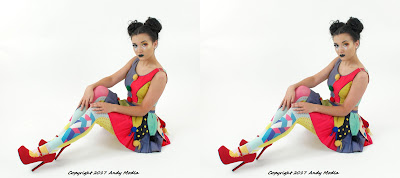 |
| Marilyn Monroe Seven Year Itch statue at Grounds for Sculpture, Hamilton, NJ, 2017-09-10 |
This blog is about my explorations at the intersection of Photography, Technology and the Arts. But lately, I am more deeply involved with the Technology universe and neglecting my enthusiasm for making photos. Sometimes tool building gets more attention:
Photography Apps
I publish 8 Android apps in the Google Play Store under my business Tekla Inc. All the apps are free, except for one for purchase 3D/VR Stereo Photo Viewer. It takes a lot of time to update and add new features to these apps that are all related to or connected with photography.
For example, I modified the free open source app Open Camera to create the free Open Camera Remote app. My modifications add remote shutter trigger over a local WiFi network to capture photos and video. You could trigger up to 4093 phones at once to take photos nearly simultaneously if they are all running this app. Think of the possibilities with a large group.
Plus I just added the capability to retrieve photos taken by the Open Camera Remote app using a WEB browser, but only on the local network connected to the phone. And I added a 3D cha-cha mode to take left/right images for creating 3D photos. There is also a new feature that lets you align the scene you are shooting with your previous photo to help with taking 3D (left/right photos), and for creating composite, or stitched photos when you edit your photos using other apps. And my 3D/VR Stereo Photo Viewer app can be launched to view 3D cha-cha photos as well as 2D photos.
And there is a free app, WiFi Remote Capture for signaling the Open Camera Remote app to trigger the shutters of all phone cameras on your local WiFi network running the Open Camera Remote app.
I am also coding some new apps that may yet be published. These use Processing/Android language, and are photography apps.
Open Source Publications
I continue to add improvements to my free open source contributions for the Processing Cardboard Android platform to use Google VR Cardboard, allowing you to write VR apps written in the Processing/Android language.
A professor at a woman's high school in California will be using this platform with advanced students to code 3D/VR Android graphics apps.
I also published an open source Stereogram creation tool coded in Processing on GitHub.
And I published an open source Processing Android demo showing how to merge Android apps with Processing. The latest version of Processing SDK supports generation of Android apps that can be combined with Android Studio SDK.
I also published an open source Stereogram creation tool coded in Processing on GitHub.
And I published an open source Processing Android demo showing how to merge Android apps with Processing. The latest version of Processing SDK supports generation of Android apps that can be combined with Android Studio SDK.
Camera Control Hacks
As an experiment I wired together two Bluetooth selfie shutter release controllers to trigger remote cameras for shooting 3D photos. They required a diode OR circuit for the controller buttons, to allow a single button press to trigger two cameras simultaneously. The conclusion is that you have to use a diode OR circuit to make this work. I captured 3D photos with two smartphones with this controller hack.
3D/VR Photography Meetup
I started a new 3D/VR Photography meetup group in July. It's for 3D photography enthusiasts who want to meet, learn and share how to capture 3D photos and discuss all things stereoscopic. My latest idea for a meetup, for anyone in the world to participate, is to use https://vtime.net, vTime, a social virtual reality network, for members to discuss and view 3D photos using VR headsets. You can find the event announcement at Virtual 3D/VR Meetup.















































